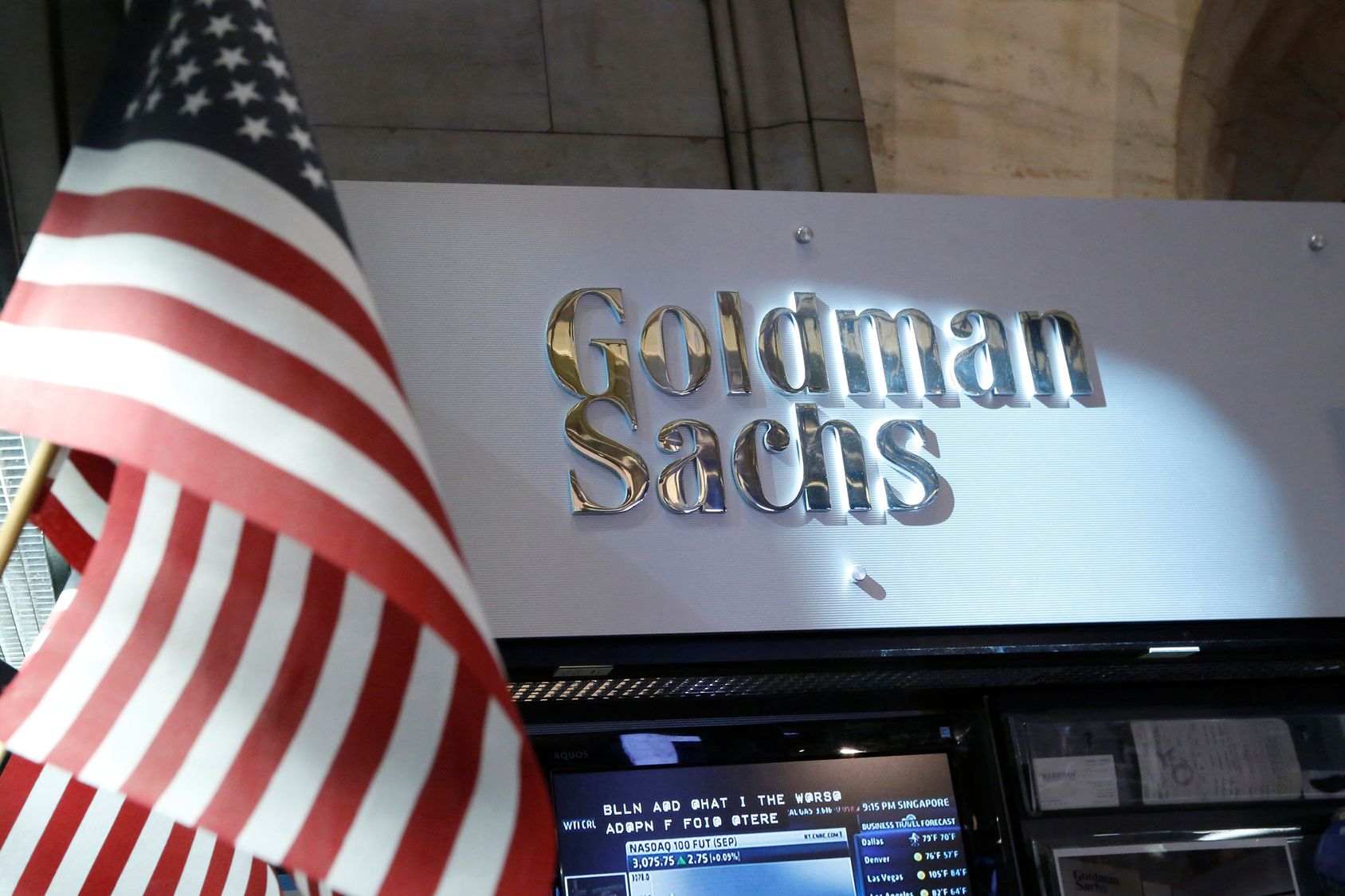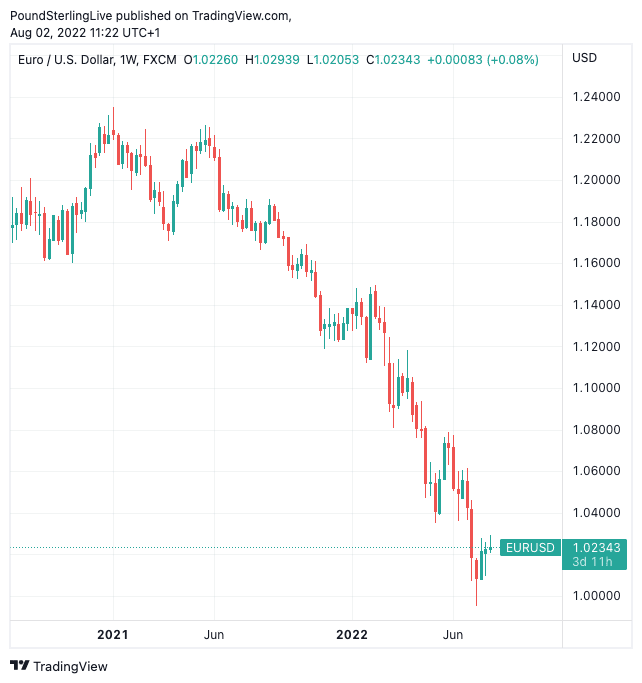Goldman Sachs Downgrade Euro-Dollar Forecasts
- Written by: Gary Howes
- EUR set to be weighed by energy crunch
- Which will be at its most acute early winter
- EUR/USD 3M forecast moved below parity

Above: A view of the Goldman Sachs stall on the floor of the New York Stock Exchange. REUTERS/Brendan McDermid/File Photo.
Goldman Sachs has cut its forecasts for the Euro relative to the Dollar, citing a challenging winter for the Eurozone economy which is now expected will slide into recession.
The call comes as the Euro recovers from July's foray below $1.00, but it would be premature to believe the bottom is in and a major recovery is shaping up, say analysts.
"The next 6 months seem likely to be challenging for the Euro area, which is likely to keep EUR/USD close to parity," says Michael Cahill, foreign exchange strategist at Goldman Sachs.
The call comes alongside predictions by Goldman Sachs' economists for the Eurozone economy to fall into recession in the second half of the year.
"The recent move lower in EUR/USD reflects this shifting growth outlook, and is likely to extend somewhat further," says Cahill.
The Euro to Dollar exchange rate (EUR/USD) has been in decline since May 2021 where it peaked at 1.2254.

Above: EUR/USD at weekly intervals.
The pair has trended lower steadily since, reaching a nadir at 0.9952 in July 2022 before recovering somewhat to 1.0233 where we find it today.
"The recent recovery in EUR/USD is not entirely justified by the news flow and the market still has some work to do to price our new baseline outlook," says Cahill.
A list of fundamental drivers are widely acknowledged to be driving the decline in Euro exchange rates over recent months.
The Dollar started a cyclical rally in May 2021 as markets started to appreciate the Federal Reserve would start to exit is process of quantitative easing and ultimately raise interest rates.
The draining of USD liquidity associated with such moves supportive of the Dollar.
At the same time, the European Central Bank's reticence to raise interest rates despite increasing inflation rates has meant the yield paid on U.S. bonds and other monetary assets is significantly higher than that paid to investors holding equivalent Eurozone assets.
Although the ECB has raised interest rates, the differential with the U.S. remains stark.
The most recent leg of Euro weakness was triggered by the war in Ukraine and associated energy price surge, that has heavily impacted the Eurozone's economic output potential and consumer health.
"With natural gas supplies from Russia well below normal, it will require some form of demand destruction," says Cahill.
Economists at the Wall Street bank say demand for energy must be curtailed significantly through some combination of higher prices and government policies if the Eurozone is to make it through the winter, even if storage tanks are full.
Goldman Sachs' commodity strategists have meanwhile warned weather-related uncertainty will be particularly elevated in the first half of winter.
Symptomatic of the energy challenges facing the Eurozone was the surge in Germany 1-year forward baseload electricity prices on Tuesday, August 02.
Prices surged to over €400 per MWh for the first time ever.
"We are truly into crunching territory for the country's energy-intensive manufacturing industry," said Javier Blas, energy and commodities columnist at Bloomberg.
For context, the current price is ~1,000% higher than the €41.1 per MWh 2010-2020 average.
"As a result, we are revising down our 3m and 6m EUR/USD forecast to 0.99 and 1.02 (from 1.05 and 1.10 previously)," says Cahill.




